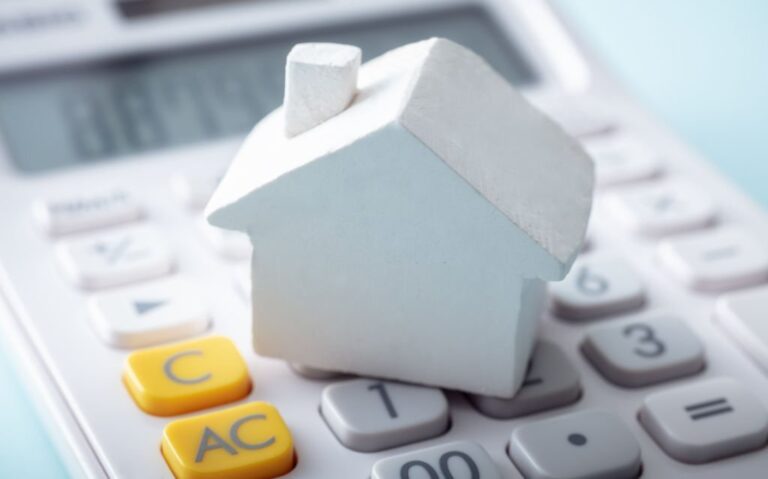The crucial understanding of the dynamics inherent in mortgage payments represents an indubitable essentiality for those venturing into the realm of domiciliary proprietorship, given the shared recognition that for a majority of individuals, the purchase of a dwelling often signifies the pinnacle of their financial exertions throughout their existence.
The Imperative of Comprehending Mortgage Payments
The competence to assess the total expenditure of the credit agreement: This overall expenditure transcends the mere purchase value of the domicile and integrates the financial premium that accumulates over the mortgage’s lifespan. Robust comprehension of the nuanced details of your mortgage payments facilitates the formulation of more educated determinations about the mortgage type that aligns impeccably with your circumstances, such as the time span of the mortgage term, which has a direct influence on the cumulative interest paid throughout the existence of the loan.
Deciphering the Amount Attributed to Interest
A critical component to fathom is the architecture of mortgage payments. In the nascent stages, the bulk of your mortgage payment is earmarked toward the interest rather than the principal. As the mortgage advances, this balance transitions, and subsequent payments contribute more towards reducing the principal than servicing the interest. A cognizance of this structural design equips you with the knowledge of your finances’ trajectory and could illuminate strategies for economizing on interest costs, such as executing a lump sum repayment or opting for a shorter loan duration.
The Consciousness of the Principal Reimbursed Over the Lifespan of the Credit Agreement
The principal signifies the inaugural amount borrowed to procure the domicile. The objective of a mortgage is to methodically diminish this principal over time until the loan is entirely settled. Comprehending the rate at which the principal is being reimbursed over the duration of the loan can provide discernment into when you will acquire a complete proprietorship of the property and the rate of equity accumulation over time.
By comprehending these constituents of a mortgage, potential homeowners can make enlightened decisions that could result in substantial financial savings over the long term, thereby contributing to more manageable and sustainable home ownership.
Key Elements Needed to Calculate Mortgage Payments

Loan amount or principal
The loan principal, often denoted as P in the mortgage formula, is the loan amount itself. This amount is the original loan amount, not including any interest. For example, if you purchase a $350,000 home and put down $50,000 in cash, you’re borrowing $300,000 of principal from the lender, which you’ll need to pay back over the length of the loan.
The annual interest rate on the loan, denoted as r in the mortgage formula, is the monthly amount that the lender charges you on top of the principal. It’s crucial to remember that this is not necessarily the Annual Percentage Rate (APR) because the mortgage is paid monthly, not annually, which creates a slight difference between the APR and the interest rate.
The loan’s term (number of years to repay) The term, symbolized as t in the mortgage formula, refers to the number of years you must repay the loan. For instance, most home loans are either 15-year or 30-year terms.
Number of payments per year Usually denoted as n in the mortgage formula, this is the number of payments per year. For most mortgages, this would be 12 for monthly payments
Explanation of the Formula
- P represents the principal or loan amount. As stated before, P represents the original amount of the loan or the principal that you have borrowed from the lender.
- r represents the annual interest rate as a decimal. This is the yearly interest rate charged by the lender, divided by the number of payments made in a year to get the monthly interest rate. It’s represented as a decimal in the formula, meaning an annual interest rate of 4% would be input as 0.04.
- n represents the number of payments per year. For a typical mortgage where payments are made monthly, n equals 12. However, this could change if the payments are made on a different schedule.
- t represents the loan’s term in years. This is the term or duration of the loan in years. For example, a standard 30-year mortgage would have a t value 30.
The mortgage payment formula is: Payment = P * (r / n) * (1 + r / n)^(nt)] / (1 + r / n)^(nt) – 1
This formula calculates your monthly payment by multiplying the principal amount with the monthly interest rate and the ratio of the compounded interest over the loan term to the subtraction of one from the compounded interest.
Monthly Interest and Principal Components
Explanation of how payments are divided between interest and principal. Each mortgage payment comprises two main components: principal and interest. The principal component is the portion of the payment that reduces the original loan amount. On the other hand, the interest component is the fee charged by the lender for borrowing the money. The exact amounts going towards principal and interest change with each payment in a process known as amortization. In the early years of the loan, the majority of the payment goes toward interest. As time progresses, a more significant portion of the payments goes toward reducing the principal.
Amortization
Introduction to the concept of amortization is the process of paying off debt, like a mortgage, over time through regular payments. A portion of each payment is for interest, and the remaining amount is applied toward the principal balance. The exact amount applied to principal versus interest varies throughout the term of the loan, with more of your payment going to interest in the early stages of your loan repayment schedule and gradually shifting towards more principal repayment later in the loan term.
Additional Costs
Mention of other costs often included in monthly payments. It’s essential to note that your total monthly mortgage payment usually has more than just the principal and interest. Other costs are often incorporated, such as property taxes and homeowners’ insurance, typically held in an escrow account. Additionally, if your down payment is less than 20% of the home’s purchase price, you’ll likely have to pay mortgage insurance, either private mortgage insurance (PMI) or a mortgage insurance premium (MIP) for FHA loans.
FAQ:
What is the formula for calculating monthly mortgage payments?
The formula for calculating monthly mortgage payments for a fixed-rate loan is Payment = P x (r / n) x (1 + r / n)^(nt) / [(1 + r / n)^(nt) – 1], where P is the principal loan amount, r is the annual interest rate in decimal form, n is the number of payments per year, and t is the loan term in years.
How do I manually calculate my mortgage payment?
You need the principal loan amount, annual interest rate, and loan term to manually calculate your mortgage payment. Use the formula from above. Remember to convert the annual interest rate to a monthly rate (divide by 12) and ensure the loan term is in years.
How do you calculate monthly payments?
How to calculate how much of each mortgage payment is interest?
Monthly payments can be calculated using the same formula as in the first answer. This formula is used for fixed-rate loans where the interest rate and payment stay constant over the life of the loan.
How to calculate how much of each mortgage payment is interest?
The interest component of each mortgage payment is calculated by multiplying the remaining loan balance by the monthly interest rate. Early in the repayment period, a more significant portion of each payment goes toward interest




